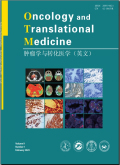摘要The growth of solid tumors relies on establishing a robust blood supply,with angiogenesis playing a key role in this intricate process.Based on this understanding,therapeutic strategies targeting tumor angiogenesis have been developed.However,the clinical effectiveness of antiangiogenic therapy(AAT)in treating tumors has not lived up to expectations.In recent years,vasculogenic mimicry(VM)has attracted increasing attention from the academic community as a longstanding but often overlooked mechanism of nonangiogenic tumor vascular-ization.Within the tumor microenvironment,neoplastic cells can autonomously form vessel-like structures,creating a blood supply that does not rely on endothelial cells.This phenomenon,known as VM,is a critical marker of aggressive tumors and may play a significant role in conferring resistance to AAT.In this review,we thoroughly examine the evidence,clinical characteristics,and mechanisms of VM across various tumor types and explore its potential role and importance in resistance to AAT and the development of new antitumor therapies.
更多相关知识
- 浏览8
- 被引0
- 下载0


相似文献
- 中文期刊
- 外文期刊
- 学位论文
- 会议论文



 换一批
换一批 换一批
换一批



